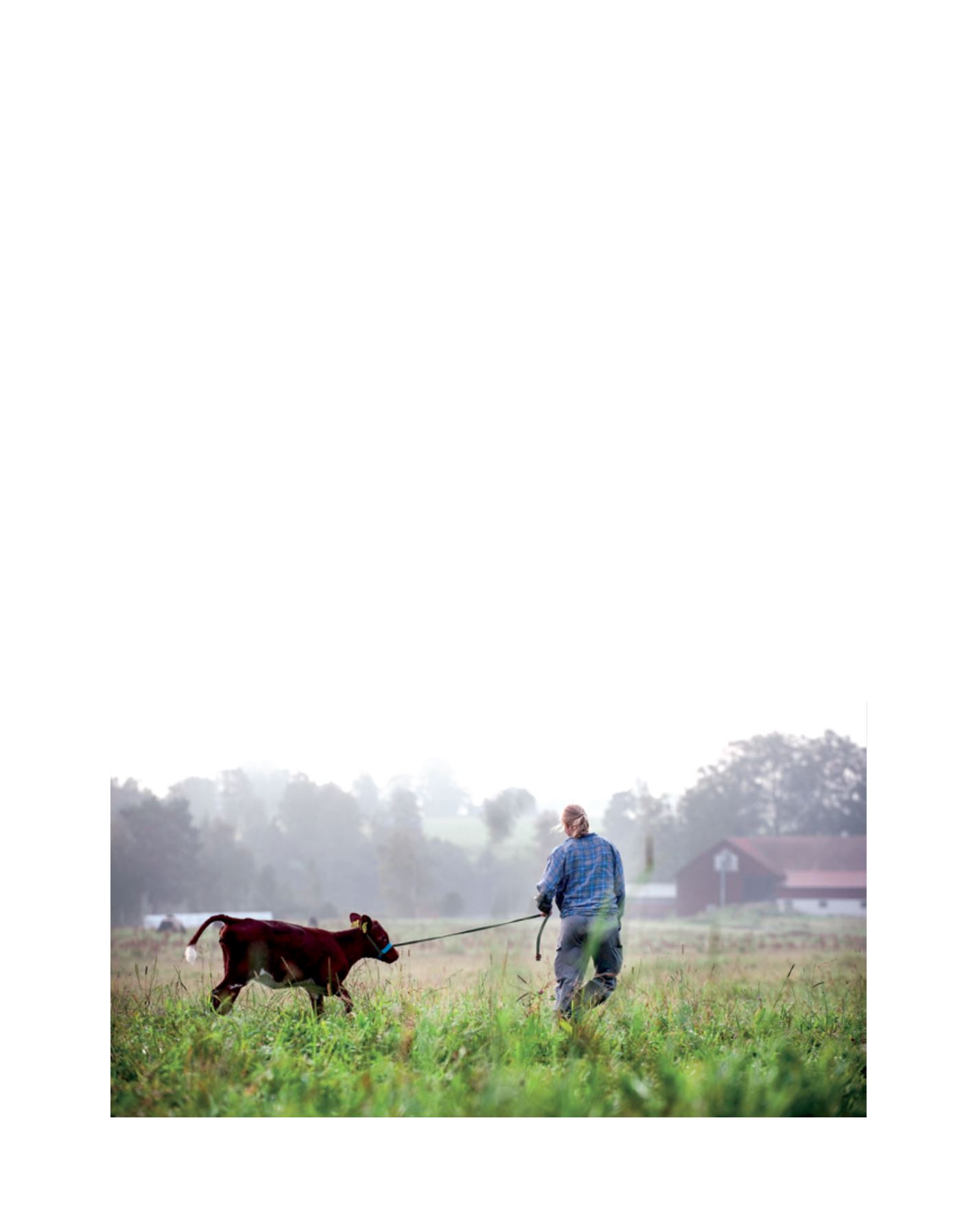

[
] 55
establish a secure and sustainable future for family farming in
the context of global food security.
The importance of young farmers to family farming is fairly
self-explanatory, considering farming businesses and the land
they are on are passed from generation to generation – there-
fore, a new generation of farmers will always be necessary
to continue the trend. However, it is important to note that
farming, compared to other businesses, tends to stay in the
hands of the older generation for much longer. This is often
quite surprising considering the comparatively increased level
of physical labour necessary, but it can perhaps be explained
by the years it takes for someone to perfect their farming skills,
as farmers can only really learn from their mistakes once per
harvest, compared to other careers where learning curves may
happen much more frequently. It is also likely to do with a
connection to the land, animals and production in general – a
farmer works in harmony with nature in order to reap its bene-
fits while ensuring it can continue to provide him and future
generations with income in the future. Global statistics are hard
to come by in the field of agriculture but, for example, in the
European Union (EU), the average age of a farmer (defined as
the head of the holding) is 55. This is problematic in the context
of food security for a number of reasons, primarily because of
the missed opportunities in terms of increased productivity,
efficiency and sustainability of family farms.
In the EU, young farmers are defined as heads of holding
under the age of 40. Although these make up just 7 per cent
of the farms in the EU today, it is these in particular which
consistently produce more food per hectare than their older
counterparts. It is difficult to say exactly why this is the case
with any certainty, but easy to come up with a few ideas. Higher
young farmer productivity is likely to be down to a number of
factors, including a higher level of education than their prede-
cessors – with many young farmers in the EU now holding
highly-respected academic qualifications such as degrees in
agronomy, agricultural economics, business management,
environmental studies and more. Young people are also more
technologically able, leading to the use of innovative farming
techniques and modernization of the family farm to enhance
productivity while safeguarding sustainability and biodiversity,
in keeping with the traditions of a family farm and ensuring
its survival. Because of their increased productivity, established
young farmers are also more likely to employ more labour than
others. Finally, young farmers are more adaptable –more likely
to be willing to change produce, buyers or carry out activities
such as direct selling, bringing consumers closer to farmers
while ensuring a decent price for both parties. All these factors
contribute to a clear picture: a younger farming population is a
more productive one, and therefore more likely to achieve global
food security. But in a world with an ageing population, particu-
larly in the farming sector, what is to be done to achieve this?
Although family farms still make up the majority of food-
producing farms across the world, they are in decline, and have
been for some years. This has been caused by the lack of interest
shown by many young people in taking over their parents’ farm.
Considering the job opportunities in urban areas compared to
rural areas and the vast difference in average income in the
agricultural sector compared to others, this is not surprising.
Some parents discourage their children from following in their
footsteps because they wish them an easier, more prosper-
ous life. This should not come as a surprise considering that
on average, a farmer will earn around half of what someone
working in another economic sector earns. Combine this with
the lack of infrastructure and services in rural areas compared
Image: CEJA/Ulf Palm
CEJA advocates a range of support measures to help young farmers get their feet off the ground
D
eep
R
oots
















